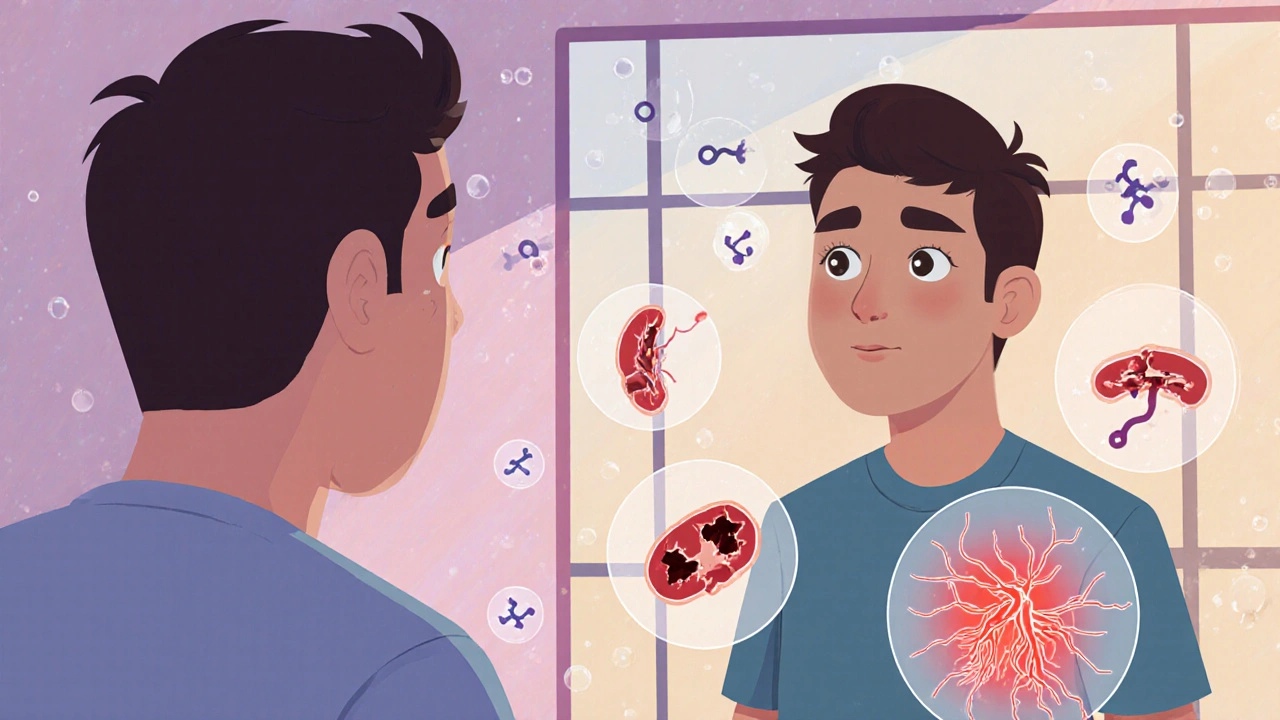Sitagliptin Side Effects: What You Need to Know About Common and Rare Reactions
When you’re taking sitagliptin, a DPP-4 inhibitor used to lower blood sugar in adults with type 2 diabetes. Also known as Januvia, it works by helping your body make more insulin when needed and reducing the sugar your liver releases. Unlike some diabetes drugs, sitagliptin doesn’t usually cause weight gain or low blood sugar on its own—but that doesn’t mean it’s risk-free. Many people take it without issues, but others notice changes they didn’t expect. You deserve to know what those might be before they catch you off guard.
Sitagliptin is often paired with metformin, a first-line diabetes medication that improves insulin sensitivity and reduces liver glucose production, especially in combo pills like Janumet. That mix can be powerful, but it also changes the side effect profile. While metformin can cause stomach upset, sitagliptin brings different concerns: joint pain, headaches, and in rare cases, serious skin reactions. There’s also a small but real risk of pancreatitis, inflammation of the pancreas that can be life-threatening if ignored. Symptoms like severe belly pain that radiates to your back, nausea, or vomiting? Don’t wait—get checked. And if you’ve had pancreatitis before, your doctor should think twice before prescribing sitagliptin.
What about low blood sugar? Sitagliptin alone rarely causes it, but when combined with insulin or sulfonylureas like glimepiride, the risk jumps. That’s why it’s not just about the drug you’re taking—it’s about the whole cocktail. And if you’re older, have kidney problems, or take other meds like NSAIDs or diuretics, your body might process sitagliptin differently. That’s why monitoring isn’t optional. Simple blood tests can catch early signs of trouble before symptoms show up. You’re not just managing sugar—you’re managing your whole system.
Some side effects are easy to miss. A persistent cough? Maybe it’s just a cold. But if it lingers and you’ve started sitagliptin recently, it could be a clue. Rarely, this drug triggers allergic reactions—swelling, hives, trouble breathing. If that happens, stop taking it and get help immediately. And while it’s not common, there’s been a link between sitagliptin and an increased risk of heart failure in people with existing heart disease. That’s why your doctor should know your full history before writing the prescription.
What you’ll find below isn’t just a list of symptoms. It’s real-world insight from people who’ve been there—how they spotted problems early, what worked to ease side effects, and when they knew it was time to talk to their doctor. From sun sensitivity (yes, it happens) to joint pain that feels like arthritis, these posts cut through the noise. No fluff. No jargon. Just what you need to stay safe while managing your diabetes.
Sitagliptin phosphate may help improve erectile dysfunction in men with type 2 diabetes by supporting blood vessel health and lowering blood sugar over time-not as a direct ED treatment, but as a side benefit of better metabolic control.

